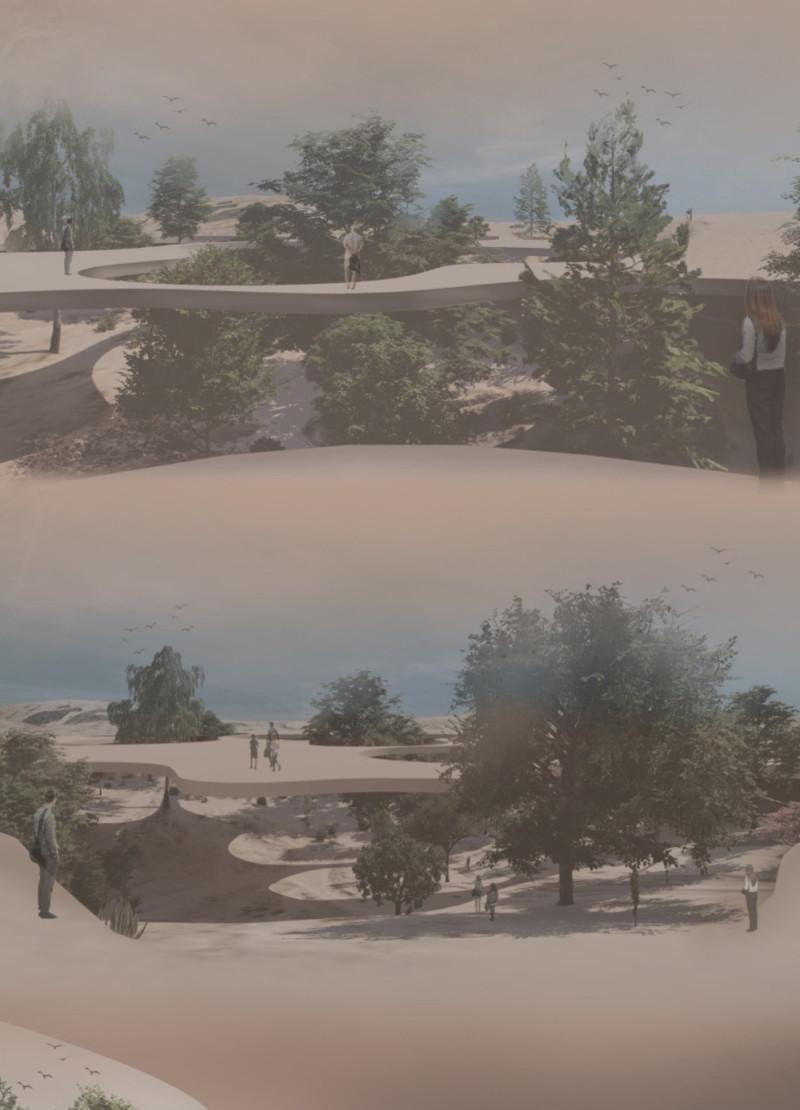5 key facts about this project
At the core of the project is the function it aims to fulfill. Designed as a community hub, the structure fosters social interactions and promotes communal activities. The layout is organized to facilitate a flow of movement, allowing visitors to easily navigate between different areas, such as gathering spaces, educational facilities, and leisure zones. This thoughtful organization is crucial for enabling a vibrant atmosphere where community members can engage with one another, attend events, or simply spend time in a shared environment.
The architectural design is characterized by a balanced relationship between open and enclosed spaces. Large windows and open areas invite natural light, creating a warm and welcoming environment. This effective use of daylight not only enhances the aesthetic quality of internal spaces but also reduces energy consumption, aligning with contemporary sustainability goals. The integration of outdoor areas, such as gardens or terraces, further extends the usable space, encouraging occupants to connect with nature and promoting well-being through interaction with the elements.
Materiality plays a significant role in the project, influencing both its character and sustainability. The design employs a combination of local materials, such as brick, wood, and glass, which not only resonate with the surrounding landscape but also reflect the cultural heritage of the region. The choice of materials provides durability while ensuring the structure can withstand local environmental conditions. Additionally, the use of recycled or sustainably sourced materials highlights a commitment to environmental responsibility, which is increasingly important in modern architectural practices.
Unique design approaches are evident in several aspects of the project. The roof structure, for instance, is designed to collect rainwater, which is then used for irrigation of the gardens, demonstrating an innovative incorporation of sustainable practices into everyday functionality. Furthermore, the building’s façade is designed to respond to solar orientation, with shading devices that minimize heat gain while maximizing views to the outside. This level of attentiveness to both environmental factors and user comfort distinguishes the project and enhances its overall effectiveness as a responsive piece of architecture.
Landscape design is also integral to the project. Surrounding green spaces not only complement the built environment but also serve as integral components of the architectural concept. These outdoor areas are designed to encourage social interaction and community activities, reflecting a broader vision of public space as an extension of the building itself. The landscaping thoughtfully integrates native species, enhancing biodiversity and reinforcing the relationship between the project and its ecological context.
As visitors engage with the architecture, they encounter an embodiment of thoughtful design principles that prioritize function while respecting the environment. This project presents an opportunity for its users to experience architecture that is not merely a backdrop, but an active participant in their daily lives. The careful calibration of light, space, and materiality will resonate with those who utilize the building and contributes to a sense of place and identity within the community.
For those interested in delving deeper into the specifics of this architectural design, such as architectural plans, architectural sections, and other architectural ideas, it is highly encouraged to explore the project presentation. Through detailed analysis and further exploration of these elements, one can appreciate the nuances and intentions embedded within this architectural endeavor. The invitation remains open to discover how this community-focused design shapes experiences and interactions for its users while offering a compelling model of contemporary architecture.























